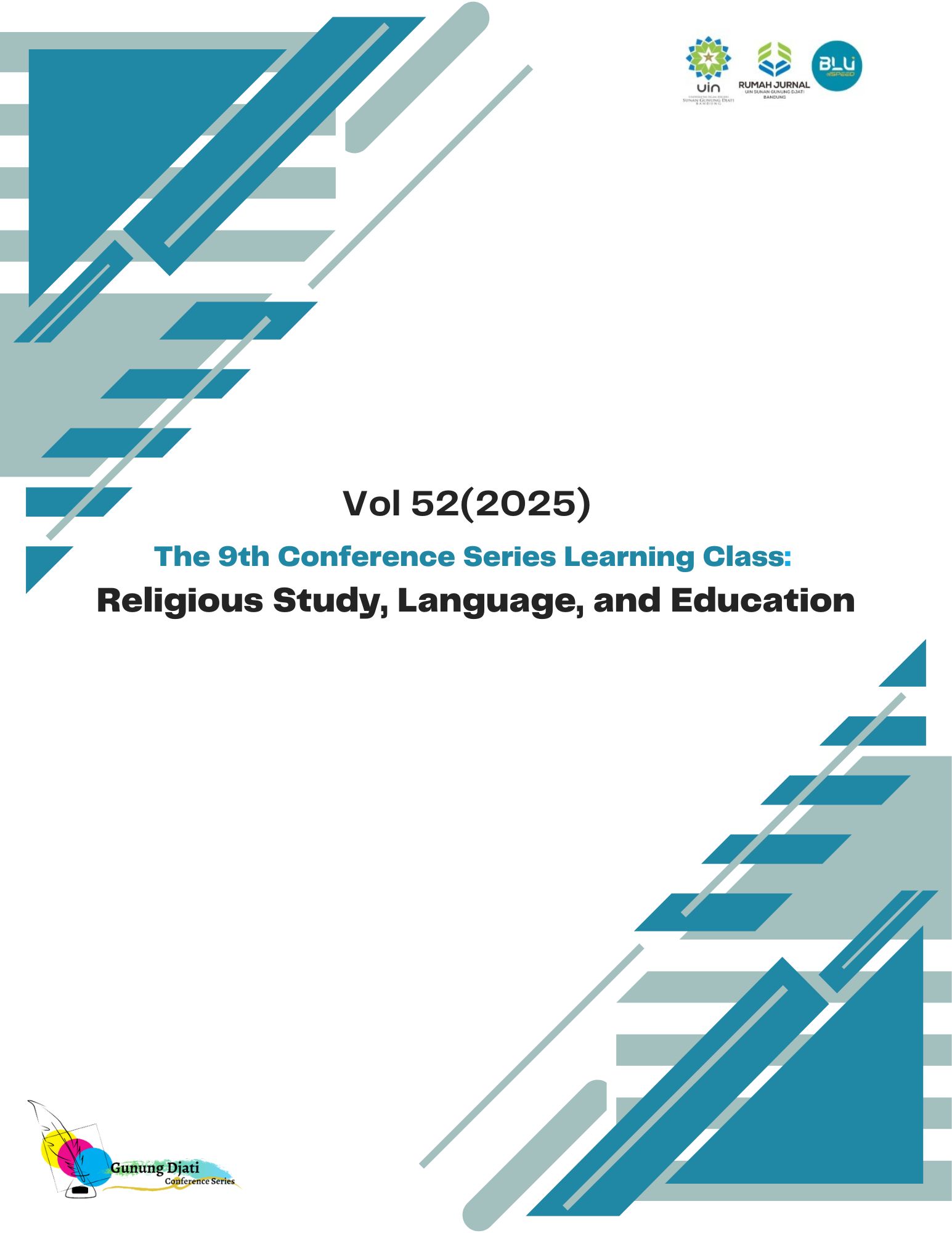Development of E-Comics on Biotechnology Materials Equipped with Factual Videos for Scientific Literacy Skills
Keywords:
Biotechnology; E-comics; Factual video; Science literacy; ADDIEAbstract
Biotechnology can be confusing. Comics make learning more engaging, fun, and understandable by telling stories. Innovation creates e-comics using factual recordings. This study examines the feasibility, readability, and student reactions to biotechnology e-comic media with factual videos. This study follows the ADDIE development methodology from analysis to design, development, implementation, and assessment. This study involved randomly selected grade XII students of Sultan Daulat 1 High School. This study found that 1) biotechnology e-comic media accompanied by factual videos had a material validation score of 84% and media validation of 93% with a very valid category. 2) Comic media obtained a readability score of 81.4% with a very good category. 3) Students' answers to comedy media obtained a very good score of 82%. These findings indicate that biotechnology e-comic media with factual videos is valid and can be used for learning.
Downloads
References
Adawiyah, C.F. Pasani, and K. Kamaliyah (2024). Creating a proportion-based character education mathematics curriculum for electronic comics. Journal of Student Mathematics Education, 4(2), 1–11. https://doi.org/10.20527/jurmadikta.v4i2.2476
Junanto, R. Afandi, and Afriani (2016). 21st-century education and digital literacy in Indonesia. National Seminar on Science Education, 113–120.
Agustín, H.A., Bektiarso, S., & Bachtiar, R.W. (2018). Creating a physics comic module on Kepler's Laws for eleventh-grade students. Journal of Physics Learning 7(2):168–174.
Aini, W. Hadi, M. Yasir, A. Rakhmawan, and C. Sutardja (2023). Sharing integrated scientific comics: Flood prevention through environmental literacy. Trial: Journal of Science Education, 3(2), 27–39.
Akbar, S. Kune, and E. Ristiana (2022). The impact of interactive video and the Savi learning paradigm (Somatic, Auditory, Visual, and Intellectual) on sixth-grade science learning outcomes at SD Inpres Tarailu, Sampaga District, Mamuju Regency. Naturalistik: Journal of Educational Research and Learning, 7(1), 1406–1415.
Angraini (2019). Analysis of higher-order thinking skills related to biology in tenth-grade high school students in Solok City. Journal of Information Technology and Educational Sciences 1(1):114–124.
Ardiansyah AAI, Irwandi D, and Murniati D (2016). Analysis of Basic Chemical Law Literacy in XI-grade Science Students in South Jakarta. Journal of Chemistry and Education, 1(2), 149–161.
Arianti (2023). Digital comic design as an introduction to 3D animation courses. Journal of Visual Communication and Multimedia Design, 09(03), 422–437.
Arif, H. Praherdhiono, and E.P. Adi (2019). Making an elementary school science film about style. Journal of Educational Technology Studies, 2(4), 329–335.
Arikunto (2019). Research method: practice. Rineka Cipta, Jakarta.
Arsyad, A. (2017). Learning media. Jakarta: Rajawali Pers.
Ayu, M., Nursamsu, and Mahyuny, S.R. (2024). Development of electronic comic learning media in biology for secondary school students. Journal of Biology Education, 12(2), 184–201.
Cahyadi, RAH (2019). Development of teaching materials based on the ADDIE model. Halaqa: Journal of Islamic Education, 3(1), 35–43.
Chasanah, A.B. Wicaksono, S. Nurtsaniyah, and R.N. Utami (2020). A review of students' mathematical literacy in inferential statistics from a learning style perspective. Pendidikan: Jurnal Pendidikan Matematika 10(2), 45–56.
Dakunya, L.F. Siregar, and Y.P. Pasaribu (2024). Creating hydrocarbon-related comics for chemistry classes. Jurnal Pendidikan Sains 8(2):223–230.
Dasor, Y.W., and Sennen, E. (2021). Teacher involvement in elementary school literacy. Jurnal Literakasi Pendidikan Dasar 2(2):19–25.
Ditriguna, INAK, Sudiana, IN, Suastra, IW (2023). Digital comics using Comic Life to improve sixth-grade science literacy. Jurnal Ilmu Pendidikan dan Belajar 7(3):416–424.
Farsa, A. Johari, and Kamid (2022). Creating a comic-based virtual science course with factual films for middle schools. BIODICS: Scientific Journal of Biology Education, 08(2), 22–30.
Fatmah (2021). STEM-based PjBL for innovation among biotechnology students. Pedagonal: Scientific Journal of Education 5.01, 7–14.
Febrianto, Sulton, and Praherdiono (2020). Developing an electrical installation instructional video. Journal of Educational Technology Studies, 3(2), 149–157.
Filjinan, S Supeno, and R Rusdianto (2022). Creating an interactive e-comic to improve middle school science literacy. Pendekar Pedang: Pendidikan Karakter 5(2):125–129.
H. Fives, W. Huebner, A.S. Birnbaum, and M. Nicolich (2014). Creating a middle school science literacy test. Science Education, 98(4), 549–580.
H. Hamid (2013). Development of Indonesian Education. Bandung: Pustaka Setia.
Harahap, F., Insani, H., Diningrat, D.S., Nasution, NEA, Poerwanto, R., and Hasibuan, RFM (2019). Needs assessment of research-based plant propagation teaching manuals in plant tissue culture courses. International Conference on Educational Sciences (ESIC), 432, 17–21. https://doi.org/10.2991/assehr.k.200417.005
Harahap, M. Restuati, and A. Hasairin (2020). Assessment of students' critical thinking, literacy, and attitudes regarding ecosystems. 488, 93–96, 5th Annual International Seminar on Transformative Education and Educational Leadership. https://doi.org/10.2991/assehr.k.201124.023
Hasairin, A. (2018). The Talking Chips cooperative learning approach for biodiversity at SMAN 1 Medan. Jurnal Pelita Pendidikan 6(4):253–264. https://doi.org/10.24114/jpp.v6i4.11719
Hasairin, UNAD Jayanti, A. Hartono, & DS Diningrat (2023). Developing an Integrated Taxonomy of Self-Discovery and Lower-Level Exploration (SDE) of Organisms resource to enhance students' critical thinking. 4th International Conference on Progressive Education 2022, reports 685–702. https://doi.org/10.2991/978-2-38476-060-2_62




